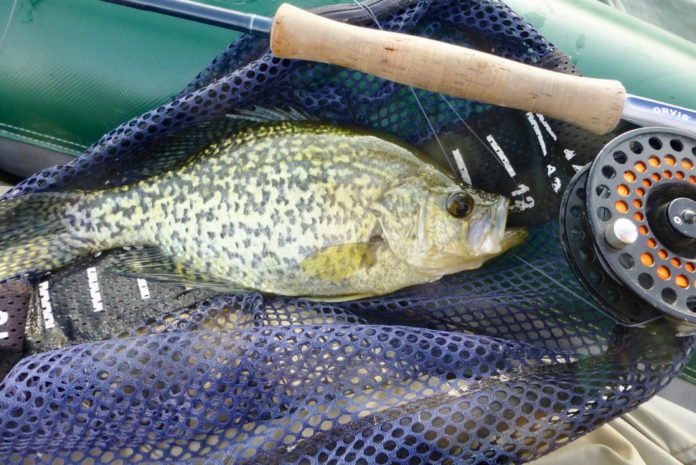This story is courtesy of takemefishing.org
Crappie fishing is very popular because they are abundant and provide lots of fun fishing action, and they are considered excellent food fish and sportfish with mild sweet, white-flaky fillets. There are two species, black crappie, and white crappie, and both are plentiful in many of Idaho’s lakes and reservoirs.
Crappie creel limits are usually very liberal with no restrictions on size or bag limit, but check the rules for where you’re fishing. Crappie are a very prolific species, so taking a batch home to eat does no harm to the population.
CRAPPIE FISHING BASICS
Crappie are mostly minnow eaters, and minnows hide around any kind of brush or weeds to avoid being eaten. The key to how to catch crappie is to focus on fishing wherever minnows hide. That also includes fallen trees, bushes, man-made structures, flooded weeds, etc. When these don’t pay off, try drifting with the wind or slow-trolling across a lake, using bait, jigs or lures at different depths until you cross paths with a school of roving crappie.
Although crappie are occasionally caught on various plugs (occasionally on a surface lure or a crankbait), the one artificial that pays off regularly is a small leadhead jig with a soft-plastic body resembling a minnow. The trick is to fish this very slow. Jigs weighing from 1/64- to 1/16-ounce are often better than heavier ones, and this requires using light line. Artificial flies that resemble jigs can also be productive.
Crappie anglers primarily use ultralight spinning or spincasting reels equipped with 4- or 6-pound-test line and 5- to 5 1/2-foot-long rods. Fly rods designed for trout fishing with 4 to 8 pound leaders will also work.
HABITAT
Crappie are commonly found in Idaho’s lower to mid-elevation (under 4,500 feet elevation) lakes and reservoirs and slow moving rivers. They are abundant in most the Snake River’s reservoirs and other larger lakes where you find warmwater fish species, such as bass, bluegill, perch, etc.
You can find water that have crappie through Idaho Fish and Game’s Fishing Planner
Black crappie prefer cooler, deeper, clearer waters with more abundant aquatic vegetation than do white crappie. This includes still backwater lakes, sloughs, creeks, streams, lakes and ponds.
White crappie can be found in creek backwaters, slow-flowing streams, sand- and mud-bottomed pools, small to large rivers, and lakes and ponds. They prefer shallower water and can tolerate warmer, more turbid, and slightly alkaline waters. They are usually found near dropoffs, standing timber, brushy cover, or other artificial cover.
SCHOOLING BEHAVIOR
Since both species congregate, an angler who comes across one crappie is likely to find others nearby. They are especially active in the evening and early morning, and remain active throughout winter.
FOOD
Small minnows form a large part of the adult fish’s diet, and they consume the fry of many gamefish species. In southern reservoirs, gizzard or threadfin shad are major forage, and in northern states, insects are dominant. Crappie feed through winter and are very active under the ice.
IDENTIFICATION
The black crappie and white crappie are silvery olive to bronze with dark spots; on the black crappie the spots are irregularly arranged instead of appearing in seven or eight vertical bands as they do on the white crappie. Both species are laterally compressed and deep-bodied. The best way to differentiate the two species is by counting dorsal fin spines, as the black crappie usually has seven or eight, the white crappie six.
Credit: Source link































